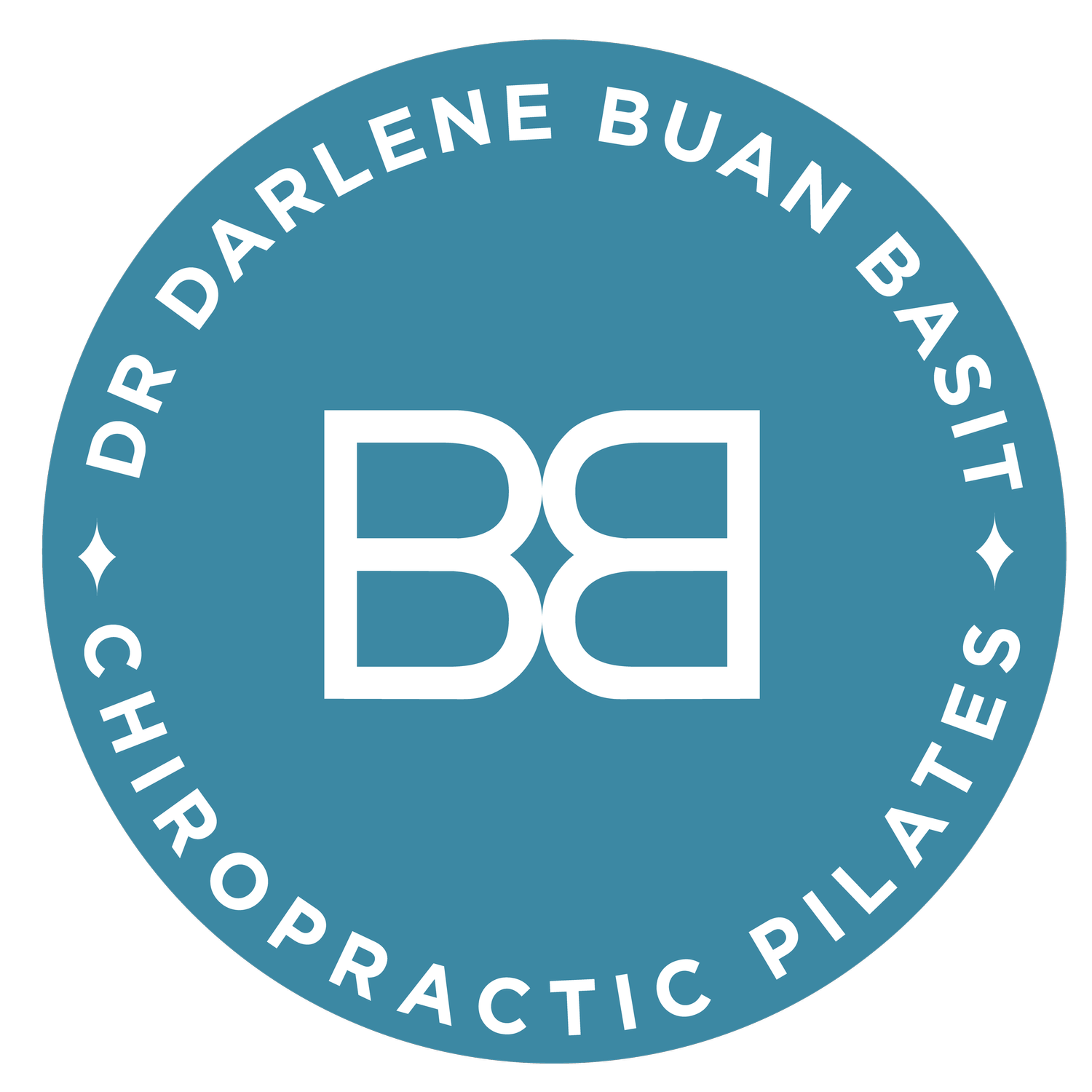how to help chronic low back pain using hypopressives and low pressure fitness:
Dr. Darlene Buan-Basit is incorporating hypopressives and Low Pressure Fitness into therapeutic pilates rehab programs, to help symptoms of abdominal and pelvic floor weakness.
Low Pressure Fitness is a breathing technique combined with specific poses/exercises that focuses on myofascial lines and improves posture. You will improve muscle tone and breathing patterns. Posture changes are significant!
Try this test:
Step 1. Look at your abdominals in the mirror and cough.
Did your abdominals go in or out?
Which part of your abdominals went in? The upper half or lower half?
Which part of your abdominals went out?
Step 2. Now how many of these do you do? (shhh... this is not a easy topic but 1 in 3 people have pelvic floor dysfunction, so be honest with yourself)
☐ I cross my legs when I laugh.
☐ I accidentally pee when I sneeze.
☐ I brace myself before I cough.
Strenuous exercise, poor posture, hormonal changes and pregnancy can increase intra-abdominal pressure. This pressure INCREASE or HYPERPRESSIVE strains the abdominals and the pelvic floor, leading to weakness, and can affect internal organs.
The consequences:
Chronic low back pain
Accidental leakage
Diastasis recti or split in the abdominals
Inguinal or umbilical hernias
Uterine or bladder prolapse
Any athlete or person who “bears down” when performing an activity, will increase the intra-abdominal pressure. This strains muscles of the pelvic floor and abdominals.
Introducing HYPOPRESSIVES...a breathing technique which creates a decrease in abdominal pressure, causing a negative pressure change in the abdominal cavity. The result:
Activation of abdominal stabilization muscles
Increased tone of pelvic floor muscles
Improved breathing
As part of the treatment program to help chronic low back pain, this technique can can help other symptoms of abdominal and pelvic floor weakness: Urinary Incontinence, Diastasis recti, Hernias, Sexual dysfunction and Scoliosis management
This system of exercise will improve tone of pelvic floor, support of the pelvic organs, improve circulation in the pelvic cavity, all while focusing on posture and breathing mechanics.
Schedule an appointment for an assessment and program, for you,
or someone you care for.
References:
1. Hodges, P. (2007). Postural and respiratory functions of the pelvic floor muscles. Neurourol Urodyn, 26(3), 362-371.
2. Negreira, R., Rial, T., Álvarez, M., García-Soidán, JL. (2014). Can a program of Hypopressive exercise influence hamstring extensibility and lumbar mobility of football players? Journal of physical training in soccer. 8(3), 42-52.
3. Navarro-Brazález et al. (2017). Effectiveness of hypopressive exercises in women with pelvic floor dysfunction: a single-blinded randomized clinical trial followed by a qualitative reserch. International Continence Society
4. Santa Mina et al. (2015). A pilot randomized trial of conventional versus advanced pelvic floor exercises to treat urinary incontinence after radical prostatectomy: a study protocol. BMC Urology, 15, 94.
5. Da Cuña, et al. (2018). Effects of Different Abdominal Exercises on Inter-recti Distance. Revista Internacional de Deportes colectivos, 35 (6), 43-52. REST I
6. Rami, C. & Martín-Nogueras, AM. (2016). Phyisiotherapy treatment of idiopathic scoliosis: Schroth versus hypopressive gymnastics. Fisioterapia, 38(1)
7. Lowenstein L, Gruenwald I, Gartman I, Vardi Y, (2010). Can stronger pelvic muscle floor improve sexual function? Int Urogynecol J. 21, 553-556.
8. Bo, K. (2004). Urinary incontinence, pelvic floor dysfunction, exercise & sport. Sports Med, 34(7), 451-464.
